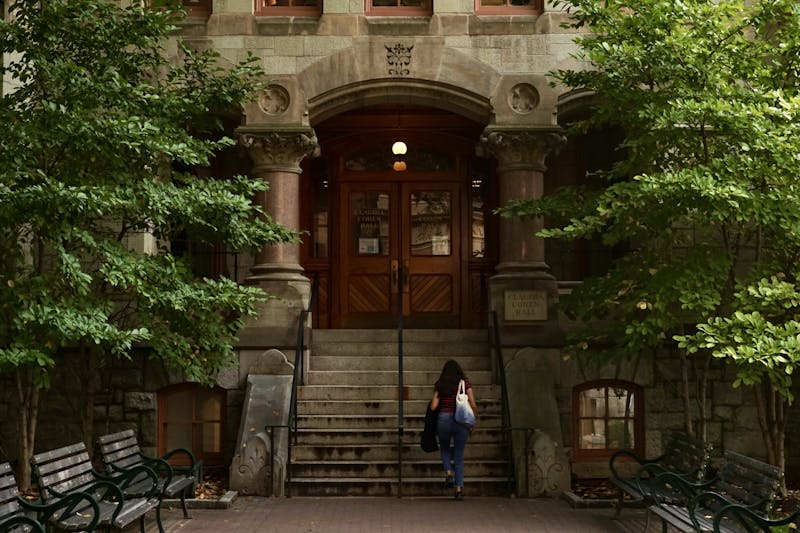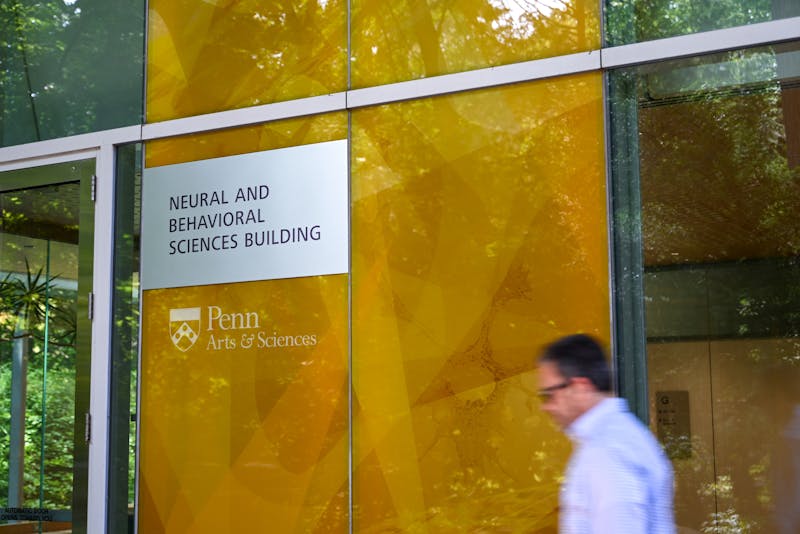Fans of Dan Brown’s novel Angels and Demons may remember CERN’s development of antimatter and a plot to annihilate Vatican City. But it seems the real CERN scientists, including several from Penn, are more interested in creation than destruction.
CERN, the European Organization for Nuclear Research, completed a successful run of the Large Hadron Collider in Geneva last Tuesday. The accomplishment marked a major milestone in the search for the Higgs boson, or what many term the “God particle” that could explain how the universe’s mass was formed.
Results from the LHC, which has cost $10 billion and been in development for decades, will enable scientists to study the mass and nature of particles that make up protons. Among other findings, this may provide clues into the origins and makeup of the universe, including a possible simulation of the Big Bang.
The results will enable Penn faculty and students — many of whom have been involved in constructing one of the machines, the Atlas detector, that collects data from collisions — to analyze real-world, as opposed to theoretical, data for the first time.
Although the LHC has been hosting collisions since November 2009, a run on March 31 marks the highest-energy collision ever staged by man, producing 3.5 trillion electron volts.
“Our whole universe and whole structure of the universe depends critically on the masses of the particles,” Physics professor Hugh “Brig” Williams said. If these masses were changed, perhaps increased 40-fold, atoms would cease to exist, he said.
The collider shoots and accelerates protons into a 17-mile underground track that runs beneath France and Switzerland. When protons collide at a high enough speed, they split into their constituent particles, some of which have been proven to exist, and others — including the Higgs boson — which physicists still hope to find.
Results are already starting to pour in, but Williams expects nothing ground breaking will emerge for at least another six months.
The collider has yet to accelerate particles at its fullest potential, which will take some time to realize, Williams said.
The University currently has more than 20 individuals involved, Williams said. About 10 live in Geneva full time.
Physics graduate students can move to Geneva after completing two years of coursework at Penn, and some undergraduates have spent summers there.
“The students that work with us are right there on the front lines,” Penn research engineer Mitch Newcomer said, adding that they sometimes contribute directly to the design of parts.
Data feeds into the United States through a central port with a lag of several days, Williams said. But during last week’s collision, Penn’s Physics Department set up a television providing live footage of the detector’s control room in Penn’s David Rittenhouse Laboratories.
When the results from the collision began feeding through the detector for the first time, there was silence, said Newcomer, who was in Geneva.
Newcomer said there was a general feeling of “God, it works!”
For many, the awe was speckled with ample relief. Following a year-long delay after a glitch in 2008, many graduate students’ plans were “put on hold,” since they are generally expected to produce original and meaningful research before completing their doctoral degrees, Physics graduate student Michael Hance said.
Faculty have also been waiting. Williams said the collider was expected to be fully operational by 2003 when he began work on the detector in 1994.
Efforts will now focus on data analysis, which may reduce the need to travel to Geneva so frequently, Hance said, although people will still need to be there to operate and maintain the detector.
The Daily Pennsylvanian is an independent, student-run newspaper. Please consider making a donation to support the coverage that shapes the University. Your generosity ensures a future of strong journalism at Penn.
DonatePlease note All comments are eligible for publication in The Daily Pennsylvanian.







